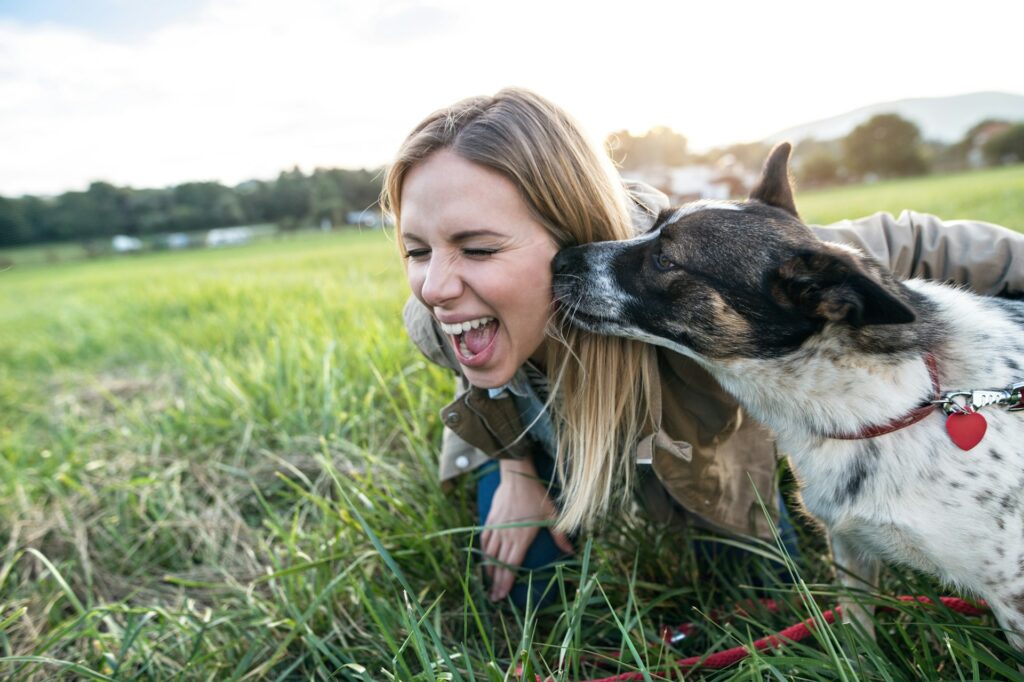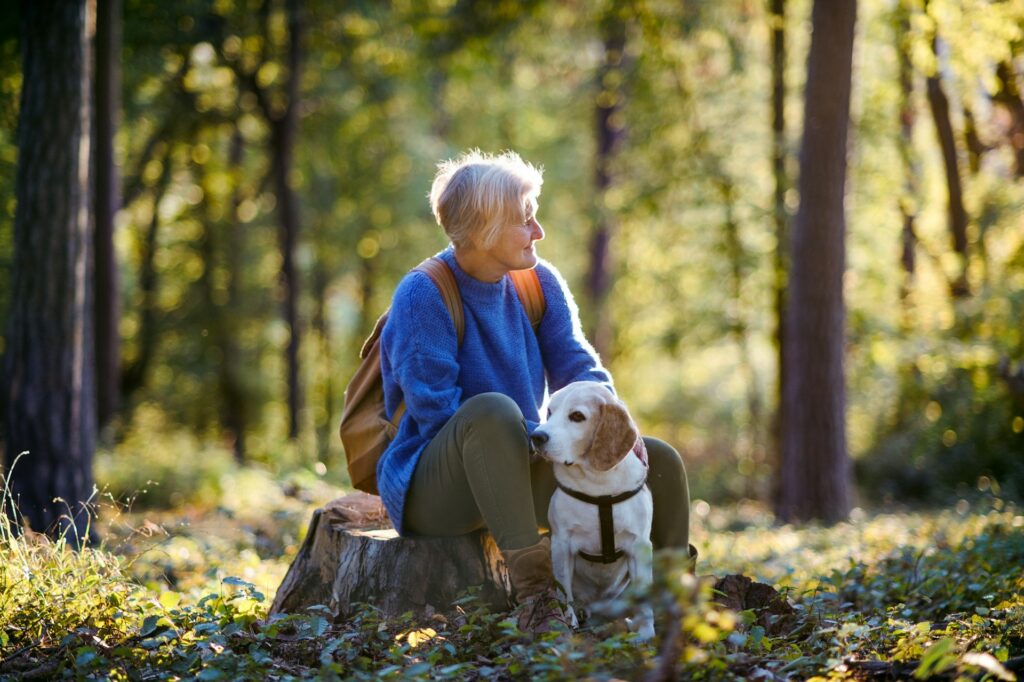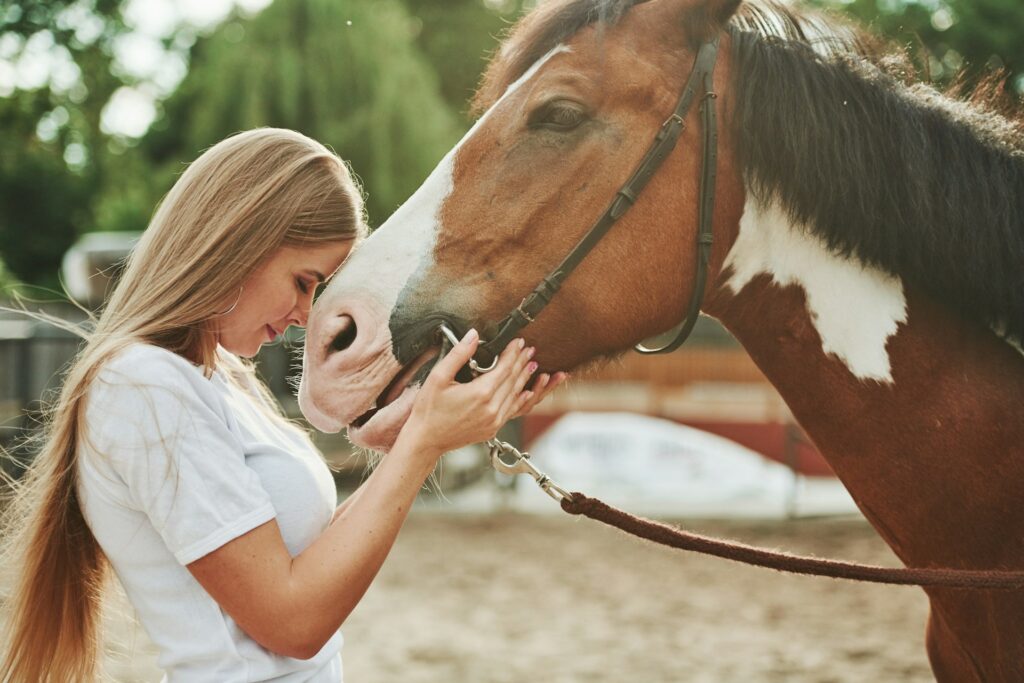In a world dominated by screens, deadlines, and concrete, many of us feel increasingly disconnected from nature.

The average person spends more than 90% of their time indoors, and it’s not always easy to carve out moments to slow down, breathe deeply, and simply be present in the natural world. While outdoor escapes like hiking trips or beach holidays can help, the daily grind often pulls us back into an urban routine. However, there’s an unexpected ally in helping us reconnect with nature: our pets.
Pets, particularly dogs but also cats, rabbits, guinea pigs, and birds, can act as a living link to the natural world. They remind us to be curious, to explore, and to pay attention to the small details happening around us—the rustling of trees, the changing weather, or the subtle seasonal shifts. In doing so, they reawaken our connection to the outdoors. And they do it in a way that feels natural and grounding, not like a wellness trend or a lifestyle challenge, but through the quiet repetition of everyday life.
Pets get us outside consistently.

This is especially true of dogs, who require daily walks and exercise, regardless of whether it’s cold, wet, or windy. These daily outings become more than just a chore; they become opportunities to experience parks, paths, woodlands, and green spaces we might not otherwise explore. According to a 2019 study published in Scientific Reports, dog owners were four times more likely to meet recommended physical activity guidelines than non-dog owners, largely due to consistent outdoor walking routines.
This time outside builds a natural rhythm. You notice when the leaves start to turn, when daylight stretches a bit longer, or when a certain flower starts blooming again. These gentle observations accumulate into something powerful, and that’s a renewed relationship with the land and a deeper sense of belonging to the natural world.
Pets invite us into presence and mindfulness.

Spending time with animals has a way of anchoring us in the present. Whether it’s watching a cat methodically groom itself in a sunny window, or noticing the way your dog pauses to sniff every leaf along the pavement, animals have a remarkable ability to slow us down and ground us in the moment.
Mindfulness doesn’t always have to be a formal meditation practice. It can be found in the stillness of watching your pet sleep, or the quiet repetition of daily routines like feeding, grooming, and walking. These interactions offer a soft, accessible entry point to mindfulness, and studies show they have measurable benefits. Research from the University of Exeter and the University of Plymouth, later published in People and Nature, found that regular interactions with animals were linked to increased nature connectedness and greater overall wellbeing.
Pets change how we experience the seasons.

Having a pet means engaging with the outdoors in all kinds of weather. You can’t skip a dog walk just because it’s raining or snowing, and cats or rabbits may still need time in the garden even when it’s cold. These moments force us into contact with nature when many other people would stay inside.
In doing so, we begin to build a more honest relationship with the natural world—one that includes mud, frost, grey skies, and early sunsets. We start noticing things we previously overlooked: the first crocus poking up from frozen soil, the call of migrating geese overhead, the scent of wet earth in autumn. These small signals help reconnect us with the passing of time in a far more meaningful way than any calendar notification could.
They train us to notice.

Animals are constant noticers. They’re attuned to smells, sounds, and sights that we often filter out. A dog might freeze and stare at a patch of undergrowth; a cat might fixate on a flicker of movement in the garden. When we follow their gaze, we see things we might have missed, such as a bird hopping between branches, a hedgehog rustling through dry leaves, a butterfly resting on a windowsill.
This shared attention subtly rewires how we interact with our surroundings. Rather than rushing through a walk, we pause more often. We look more closely. We start noticing animal tracks, insect trails, or new growth. Over time, this growing attention turns into appreciation, and appreciation is the first step to stewardship.
They deepen our connection to local places.

Visiting the same local green spaces again and again creates familiarity—not just for our pets, but for us. We start recognising the rhythms of a particular place: when certain flowers bloom, when birds return, where wildlife is most active at different times of day.
These repetitive visits form a sense of place. We develop emotional ties to these spaces because we associate them with positive memories—a quiet morning walk, a squirrel sighting that made our dog lose its mind, or the tree where we always pause for a rest. In time, these places stop feeling like backdrops and start feeling like living, breathing parts of our lives.
Pets encourage children to engage with the natural world.

Children who grow up with pets often develop empathy and a sense of responsibility for other living things. This emotional foundation can naturally extend to wildlife and the broader environment. Taking care of a hamster or walking a dog becomes a gateway to understanding ecosystems, food chains, and the importance of clean air and green space.
Simple moments like collecting feathers, watching birds at a feeder, or planting herbs for a rabbit to nibble help children engage with nature in tactile, personal ways. These experiences form lasting memories, and in many cases, they shape values that stick into adulthood.
Pets can spark bigger questions about our place in nature.

As we care for our pets, we often end up thinking about where they came from, what they eat, and how they live. These questions can easily expand into bigger ones about biodiversity, environmental ethics, and how humans relate to animals more broadly.
Why are certain pet foods more sustainable than others? How does flea treatment affect garden insects? Should we plant more wildlife-friendly plants in our garden? A seemingly simple question about a pet’s diet or health can lead to changes in our own habits, as well as in how we design our outdoor spaces or think about conservation.
Pets may not be wild animals, but they are often our most consistent connection to the animal world.

They invite us to notice, to slow down, and to look at the world with fresh eyes. In feeding, walking, grooming, and playing with them, we build daily rituals that bring us outside, anchor us in the present, and reconnect us with our surroundings.
They don’t ask us to be perfect — just to pay attention. And in that attention, we rediscover something simple and essential: we’re part of the natural world, not separate from it. Our pets don’t just enrich our lives with companionship; they gently lead us back into a deeper relationship with nature itself.